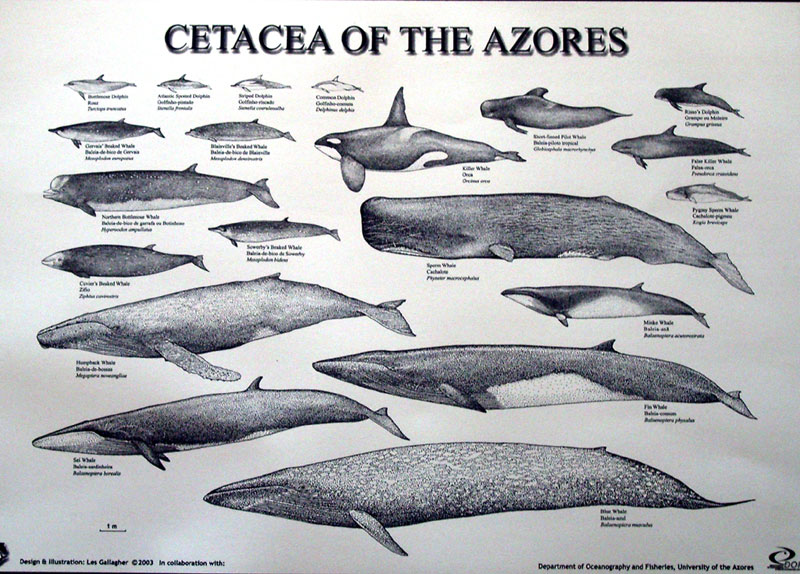The Azores
Being a research volunteer at the Azores, a whale and dolphin paradise
May 2008


The purpose for this trip is to help the cetacean researchers in the Azores to conduct research. It is by no means easy to conduct cetacean research in the middle of the Atlantic Ocean where the weather can be very unstable. When wind picks up, the waves can reach Beaufort Scale 4 within a short time. There are quite a few things we need to help out on board: collect data for POPA (a Portuguese programme that collect fisheries and marine related data), stand at the bridge to look for cetaceans or take photos for identification, listen to the hydrophone from time to time, measure the water temperature, etc. It is rather difficult to hold on to the railing at the same time when one is working. Funny things did happen to some of us occasionally and we ended up having lots of good laughs when we share our pictures in the evenings.
Our research boat spent most of the time in waters near Faial where our base camp was, as well as Pico and Sao Jorge nearby to look for cetaceans. Our captain, Chris, and our researcher, Lisa are both very professional. They were always the first to spot cetaceans from the choppy sea. I did learn a lot from them. Our expedition leader also gave us guidance to make sure that we got all the data correct. Apart from taking care of us, he drove us around the island on shore days.
Cetacea of the Azores

We encountered 8 species in 8 days working at sea. Some of the species appeared for quite a few times. The most stunning scene was the feeding frenzy of thousands of shearwaters flying all over, with hundreds of common dolphins coming to and fro in the water, together with a breaching Humpback Whale. It was like what I’ve seen in documentaries, just that I was right there on the spot.
 |
 |
| Thousands of Cory’s Shearwaters | A “Group photo” of the common dolphin, humpback whale and Cory’s shearwater |
The Common Dolphins had come over to our boat for at least 7 times in 8 days. And my favorite Bottlenose Dolphins just could not wait but came to welcome us on the first day! I miss them very much.
The acrobatic Common Dolphins


The friendly Bottlenose Dolphins




What more can I ask for after seeing the world’s largest and second largest animals – the Blue Whale and Fin Whale?
The world’s largest – Blue Whale


The second largest – Fin Whale


The gift from whales and dolphins are not limited to these. The relatively uncommon Pilot Whales and the mysterious Cuvier’s Beaked Whale came rather close to our boat, and let me have a chance to take photos of them.
 |
 |
| The mysterious Cuvier’s Beaked Whale | A pair of Pilot Whales |
Of course, I could not miss out the Sperm Whale, my double-decker bus. Our survey had identified 33 individuals, some of which appeared in the area back in 1999 while some appeared in the Azores for the first time! We also saw many Sperm Whale juveniles. Wish them have a happy and healthy childhood!
Sperm Whales


I am glad that I can help protect my beloved dolphins and whales through research. I am so much touched by their eagerness to show up and let us meet them face-to-face. The Azores was a place for whaling in the past, but it’s now a paradise for whales and dolphins. This trip is such an unforgettable experience to me. I’ve told my dolphin and whale friends that some time in my life, I’ll visit them again.
The 2008 Azores Expedition Report is downloadable here:

Websites:
http://www.biosphere-expeditions.org/index.php?option=com_content&task=view&id=67&Itemid=104
http://www.whalewatchazores.com/















